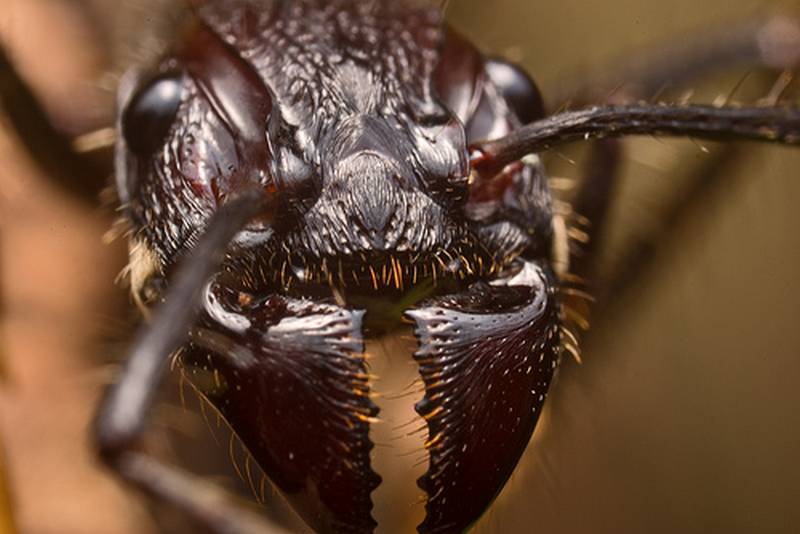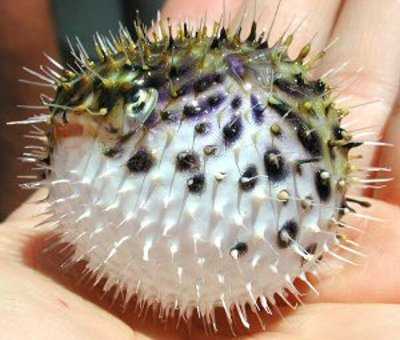Animals
Spiders – Guide for Beginners
You are here: Home / Animals / Spiders – Guide for Beginners
Spiders – Guide for Beginners
Food and Water
Tarantulas mainly attack live prey but will occasionally accept a piece of raw fat free beef if it is dangled from a piece of string to simulate movement. Tarantulas gain a lot of nourishment from beef and even the largest spider will spend 24 hours consuming a piece. Their main prey, however, is small invertebrates such as crickets, moths and flies etc.
CRICKETS: These are probably the most widely used source of live food by keepers as they are nutritious and fairly easy to rear. The cricket container must be well ventilated as they are extremely susceptible to damp conditions. In the bottom of the container there should be some screwed-up newspaper and old egg cartons for the crickets to hide in. Food consists of fish pellets, dry dog biscuits or cereal – the better the diet of the crickets, the better the diet of the tarantula. Water should be provided by either using a shallow container with damp tissue paper or freshly cut potato which must be replaced daily. A temperature range between 20 – 30oC is ideal for breeding your own supply of crickets but they will survive at lower temperatures. If a large number of adult crickets is kept, breeding is a simple affair. Shallow containers should be filled with damp compost and placed in the container allowing females to deposit their eggs. These containers should be removed on a regular basis and placed preferably in a heated area. After a few weeks, the tiny micro crickets will emerge and these can then be housed in a smaller container. Water is essential for micro crickets as they are prone to desiccation. Repeating this process for a few months will result in a constant supply of crickets of varying size to suit the size of your spiders. A well kept cricket culture will last for many weeks and provide a highly beneficial food source.
FLIES: These are eagerly accepted by arboreal species as in their natural environment, flying insects would form a large part of their diet. The fly larvae (maggots) are commercially available from fishing bait stores and are relatively inexpensive. The maggots should then be placed in a large jar with a tight fitting ventilated lid and fed on a mash of dog biscuits. Eventually the maggots will pupate and then can either be put into a fly cage until emerging or be placed into a well ventilated box in the refrigerator – this allows their development to be slowed and they can be used when required. Different species of fly should be provided depending on the size of the tarantula. For example: blow flies (blue bottles) for large juveniles to adults and house flies and fruit flies for spiderlings.
MEALWORMS & WAXWORMS: These make a good additional food source. Care must be taken as they can sometimes burrow into the substrate if the spider doesn’t accept them immediately and may cause problems when the spider is moulting. Adult beetles and moths of these worms can also be used. Mealworms have a long shelf life but as they don’t contain much nutrition, they should only be used as a supplement to the usual cricket diet.
OTHER FOOD SOURCES: Defrosted newborn mice (pinkies), rats (fuzzies) and raw, fat-free meat can also be used but be aware that it is illegal in the UK to feed live mammals to your spider. Although not necessary, they can be useful for times when the spider needs additional nutrition (in preparation for egg laying etc). Sometimes placing the defrosted pinkie or meat in front of the spider is all that is needed, but some need to be stimulated before accepting the prey. This is easily achieved by threading the mouse etc. with a long piece of thread and trailing it in front of the spider. Once the spider accepts the prey, the thread must be removed as it can cause the spider problems around the fangs. Be aware that this food source will attract mites and phorid flies so all remains must be cleaned up thoroughly afterwards.
You can collect other insects from outdoors such as moths but it is best to keep them for at least 24 hours before feeding them to the spider. This is because a food source collected from the wild may have been in contact with pesticides which could harm your spider. Obviously bees, wasps and anything that can fight back should be avoided.
FOOD CONSUMPTION
This depends on the individual. I offer one or two crickets to my tarantulas once a week but bear in mind that a hungry tarantula will take four or five crickets in one feeding so the amount offered should be according. Tarantulas can sometimes go through periods of fasting (when approaching a moult, for example) and this is especially true in adult specimens. It is not uncommon for a spider to stop feeding for several months but if it is plump and active, there is little cause for concern. Fresh water must always be available however, especially when the spider is in pre-moult.
WATER REQUIREMENTS
The tarantula must have access to clean drinking water at all times. This can be provided using any shallow container. Lids from small jars or screw tops from bottles are adequate but the container must be left open so that the spider can drink freely. Do not use items such as tissue or cotton wool in the dish as these can cause problems for the tarantula. Place some pebbles in the dish to prevent any prey items from drowning and regular cleaning of the dish is important, to remove substrate and food remains etc. Having an open water dish in the tank also helps with humidity and although they can survive long periods without food, without water they will soon die. The container should be shallow enough for the spider to immerse its entire ‘chest’ in order to drink. Arboreal species prefer to drink from the tank walls so a weekly spray of the surrounding container is necessary. Always ensure that the water dish is topped up regularly as tarantulas may drink a surprising amount in one sitting.
Housing
Before you actually buy your tarantula, its permanent accommodation has to be prepared. This means that the correct environment has to be constructed depending upon the type of spider you wish to own. Some form of heating and a suitable food source have to be arranged and if the tarantula is to be arboreal, then the tank must be of the correct dimensions, arboreal tarantulas rarely visit the ground so a taller tank is preferable but terrestrial species need more floor area. Fossorial species require custom-made tanks that allow them to construct their deep burrows but, as a guide, a good container size for most tarantulas is 12″x12″x12″ but this size can vary according to the dimensions of the spider. A large species such as the Goliath Theraphosa blondi will need a larger area, nearer 24″x15″x12″ to be comfortable. Although the aquarium is the most suitable form of housing for a tarantula, there are a lot of alternatives which will suffice. Different sizes of plastic boxes can be used as well as sweet jars provided they are stood in a heated area. Two or three tarantulas can be housed in a large tank by using dividers, but make sure these are very secure to prevent one spider climbing over, or breaking through to the other compartments. Spiderlings should be housed in smaller containers relative to their size. Too large a container and the spiderling will have trouble finding it’s food and too small, growth rates may be restricted. Juveniles and sub-adults should also be housed in appropriate containers (see photos below for a more detailed view of container options).
SUBSTRATE
Peat free compost: This is probably the most widely used substrate by tarantula keepers as it is the ideal medium for burrow construction. It holds water well helping to maintain humidity and is pleasing from an aesthetic point of view. This substrate can harbour mites and mould may be a problem but with regular housekeeping, this is minimised.
Vermiculite: Again, very popular as it is sterile, inorganic and light weight. Its high water holding capacity makes it ideal for the hot and humid environment of the spiders tank. Being inorganic, mites aren’t a problem. Tarantulas find it almost impossible to burrow into so this substrate should only be used in arboreal set ups or mixed 50/50 with compost.
Bark chips or cedar chips: These should be avoided as they promote mould growth and some types even give off fumes that may harm your tarantula. Spiders also find this substrate difficult to walk on so although aesthetically pleasing to the eye, this substrate isn’t much use.
Sand: Again, this should be avoided as it can soon turn messy and once damp, can be excessively heavy.
TANK DECORATIONS
Most terrestrial tarantulas will burrow into the substrate but there is no evidence to suggest that they cannot survive without them. A retreat should be provided however, to allow the spider a place to hide and this can be either a piece of curved cork bark placed in one corner of the tank or half a flower pot resting on its side. Providing a deep substrate provides the perfect opportunity to observe burrow construction but the tarantula will remain hidden for most of the time. Arboreal species will eventually conceal themselves in a sock-like web between suitable objects so a piece of cork bark should be provided and placed vertically against the tank wall to act as a retreat (black card should be placed against the back of the container to restrict light as all tarantulas abhor bright light. Live plants should generally be avoided as they can fail to thrive without the correct lighting (tarantulas don’t require any form of special lighting) and more often than not, the spider will uproot these with it’s digging habits. On the other hand, tank decoration can be as elaborate as you wish. Large enclosures featuring waterfalls, special lighting and plastic or real plants make interesting displays too but remember that your spider may spend long periods hidden from view and cage maintenance will be higher.
The tarantula tank doesn’t need to be cleaned out every day but there will come a time when this needs to be done. The old substrate should be replaced and any decorations thoroughly cleaned. On a daily basis food remains must be removed as these will attract mites and mould. The total elimination of mites is impossible so the keeper shouldn’t worry until they reach infestation proportions. Mites will always be present in the hot and humid environment of the tank but with regular cleaning and maintaining a clean cricket culture should keep them under control. Tarantulas are generally clean animals and they will deposit their food remains (sometimes called a food bolus) and defecate in the same corner. The water dish should be cleaned and topped up regularly (see chapter on food and water requirements).
Why Keep tarantula as a pet
.Well, the good points definitely out weight the bad. A tarantula requires little attention, doesn’t need to be taken for walks, doesn’t make any noise, doesn’t smell or carry any diseases communicable to man or domestic livestock. They are long lived so give many years of pleasure and fascination.
A few points have to be taken into consideration before you purchase your first tarantula -whether you want an adult, sub adult, juvenile or spiderling and is it to be an arboreal (tree dwelling) or terrestrial (ground dwelling) species ? There are many different tarantula species to choose from for the beginner and this section gives a description of the easier species to maintain. Arboreal species tend to be more brightly coloured of the two but terrestrial tarantulas usually make up for their less attractive appearance with a formidable leg span. All tarantulas are cannibalistic and will definitely attack each other so they must be either housed separately or in a securely divided tank. RECOMMENDED SPECIES FOR THE BEGINNER
Brachypelma smithi (red knee):
The abdomen is black with long reddish hairs as is the cephalothorax and tan hairs surround the carapace. The legs are also black with red and orange hairs on the “knees”. This species is the one everyone knows and wants and is now widely available as captive bred stock although its popularity may affect the price. A docile species which tolerates being handled. Size: Up to 15 cms leg span and slow growing, maturing at around six years. Habitat: A terrestrial burrowing species from Mexico.
Brachypelma albopilosum (curly hair):
The basic overall colouration is brown/black with light brown hairs on the legs. These hairs have a definite curl, especially on the rear legs. Size: Up to 15 cms leg span and quite docile. Habitat: A terrestrial burrowing species from the West Indies.
Brachypelma vagans (red rump):
The colour is uniform black with long red hairs covering the abdomen and the legs have pale lines running down their length. This species has been available as captive bred stock for many years and is one of the most attractive. Size: Up to 15 cms leg span. Habitat: A terrestrial burrowing species from Mexico.
Grammostola rosea (Chile rose):
The basic colouration is rich brown with long reddish hairs on the legs. The carapace has a striking pink tinge. This species is very docile and considered the ideal beginners tarantula. Captive bred stock is readily available. Size: Up to 15 cms leg span. Habitat: Terrestrial burrowing species from Chile.
Avicularia avicularia (pink toe):
This species is very attractive having a blue/green tinge to the carapace. All the legs are covered in dense black hairs and the “toes” have a distinct pink tip. Spiderlings and juveniles of this species are the complete opposite – having pink legs and black tipped toes. Size: Up to 15 cms leg span. Habitat: An arboreal species from South America.
Psalmopoeus cambridgei (Trinidad chevron):
The adults are strikingly coloured with various shades of grey, olive green and brown. The legs are covered in dense hairs and there is a small rust-red patch on each toe. The abdomen has a dark median line with five bark bands projecting off. This is an ideal first arboreal tarantula – extremely fast growing (maturing in 12 months or so) and is very hardy, able to withstand some of the problems first encountered when beginning. Widely available as captive bred stock. Size: Up to 15 cms leg span. Habitat: An arboreal species from Trinidad.
Whichever species you decide upon I recommend that it is purchased from a specialist breeder and supplier because this enables you of having a better chance of knowing more details about the spider (age, sex etc.) and captive bred stock should be bought to relieve the importation of wild specimens.
Animals
Animal weddings from around the world
You are here: Home / Animals / Animal weddings from around the world
Animal weddings from around the world
Top hat and all… Puki the dog awaits his bride to be….
Frog Raja, left, didn’t wait around to be kissed by a princess…. Instead, he took the hand of his sweetheart Rani.
Giraffe couple Zagallo and Beija Ceu show affection towards each other after their wedding in Rio de Janeiro.
Monkey love… Jhumuri and Manu tied the knot infront of half the village.
It was a traditional chruch wedding for this great dane and her rather small husband….
Proud miniature pigs display their wedding certificates after their ceremony in Chongqing, southwestern China.
This catty couple look ‘purrrfect’ for each other as they tie the knot in matching pink outfits.
Two giant pandas tuck into their wedding cake having exchanged vows during a traditional Chinese wedding ceremony.
These loved up elephants can’t keep their trunks off each other.
Puppy love…. London’s Harrods was the choice of venue for this extravagant pair…..
…. And a quick get away for the honeymoon.
Animals
Horse Fight In China
You are here: Home / Animals / Horse Fight In China
Horse Fight In China
 Chinese spectators smile sadistically at the inhumane spectacle of two beautiful horses savagely attacking one another.
Chinese spectators smile sadistically at the inhumane spectacle of two beautiful horses savagely attacking one another.
With ears back, eyes rolling and nostrils flared in fury, the enraged horses pummel each other with their hooves and bite and head-butt each other in a horrifying fight, sometimes to the death.
Men, women and children watch, and a roar of approval goes up as one horse delivers the equivalent of a double-uppercut to its opponent with its hind legs.
The cruel “sport†of horse fighting has been outlawed almost worldwide, but it still thrives in countries like the Philippines, Indonesia, South Korea and here in China, as these disturbing images of a “tournament†prove.
Chinese spectators watch as two beautiful horses savagely attack one another
They were taken in Guizhou province in south-west China, where local people claim such events are a part of a 500-year-old tradition. The horses have been goaded to fury by their owners who urge them on as they hang on to halter ropes to prevent the horses running off.
All around wildly cheering crowds lay bets on which one will be standing when the fighting ends.
It goes on for half an hour or more, until one or the other collapses or is simply too exhausted to continue.
The Chinese government would prefer you not to see these pictures as it tries to clean up its image for the Beijing Olympics which are only eight months away.
Local people claim such events are a part of a 500-year-old tradition
But critics say horse fighting is as widespread as ever in the huge country’s far-flung provinces, especially among the Miao ethnic group.
Like bear-baiting and cruelty to circus animals, authorities say it is difficult to stop an event that is embedded in local culture, and frequently celebrated at festivals along with fireworks and fancy-dress dragon parades.
In outlying towns horse fights often take place in the main football stadium.
The stallions are driven into a frenzy by the simple ploy of leading them to a mare in heat, then taking her away when they are roused. Mares are often injected with hormones to keep them in heat longer. If they are still reluctant when the mare is removed, they are whipped, and gunshots are fired to stir them up.
A losing horse is often pitted against a much stronger opponent in its next fight to ensure it dies and the spectators get the bloody finale they enjoy. Then, according to reports from some of the remote regions, the dead horse is barbecued as part of the festival.
The cruel ’sport’ of horse fighting has been outlawed almost worldwide, but it still thrives in countries like the Philippines, Indonesia, South Korea and here in China
Vivian Farrell, who has waged a long campaign against the fighting as founder and president of the International Fund for Horses, said: “It is very hard to tackle. They say it’s a tradition. Well, it used to be a tradition to sacrifice children, but we’ve moved on from that.
“Sadly it is mostly driven by the Chinese love of gambling, although people get fired up over the blood, gore and intensity of the fighting.â€
She sees some hope for progress as China emerges more into the international community. “I get emails now from younger Chinese people saying they don’t like this image and asking what they can do.
“With the Olympics coming, young Chinese people want to be seen to be more humane. But it’s going to take a lot of education and a long time.â€
A spokeswoman for PETA ? People for the Ethical Treatment of Animals ? who are campaigning for a worldwide ban on the fights, said: “Torturing these magnificent animals in the name of entertainment is deplorable. Tradition never justifies cruelty and has no place in a civilised society.â€
Animals
Glass Bone Skeletons
You are here: Home / Animals / Glass Bone Skeletons
Glass Bone Skeletons
melli ink editions’ at cramer + cramer

ganz unverhofft’, 2008
melli ink editions
cramer + cramer, geneva september 19 – november 7, 2008
melli ink is a zurich based artist who explores nature in her work by transforming bone into glass. her artwork consists of life size skeletons and bones recreated in glass. ink began her career as a set-designer and also worked as a performance and video artist. the show will be held at cramer + cramer, who’s founder philippe cramer studied with melli ink at parsons school of design over 15 years ago. the two are currently collaborating on a project that merges their disciplines together. the special edition should be ready by early 2009.
http://www.melli-ink.com http://www.philippecramer.com







Animals
Most Painful Animal Bite
You are here: Home / Animals / Most Painful Animal Bite
Most Painful Animal Bite
‘Becoming a man’ in the Setere-Mawe society means intentionally letting yourself get stung by these ants. Not just by one but by hundreds of them at once. And not just on one occasion. There, you are not a man until you have done this ritual twenty times.
Twenty times wearing a pair of gloves each laced with hundreds of live bullet ants, stingers pointing inward, for ten minutes at each go. At first it seems like a horrible practice almost on the level of honor killings, but the boys themselves really seem to have a positive outlook on it. And in America, kids cry when daddy gets them the wrong color car for their sixteenth birthday.
Click on images to enlarge!
The Most Painful Animal Bite on Earth
The Setere-Mawe people of Brazil have found something really bad.
Meet the bullet ant. So named because those unfortunate enough to have been stung by one compare it to a gunshot wound – very unfortunate people; apparently, they have also all been shot. It reportedly has the most painful sting of any insect on Earth.
Animals
Seven of the Deadliest Delicacies
You are here: Home / Animals / Seven of the Deadliest Delicacies
Seven of the Deadliest Delicacies
Poisonous or dangerous food is considered a special delicacy by some cultures in several parts of the world. In most cases, a nice feast may turn into a deadly game of Russian roulette.
1):-“Fugu” or Pufferfish
This goes on top of my list as the world’s deadliest delicacy. Even a drop of toxin from a Pufferfish or Fugu (in Japanese) can immediately leave you paralyzed, followed by death.
Fugu is considered an authentic Japanese delicacy and it would take years for a chef to master the art of preparing the dish. The toxin, called tetrodotoxin is concentrated in the roe, ovaries and the liver of the fish.
2):-“San Nak Ji” or Live Octopus
A slight error during the removal of the toxic parts can allow the toxin to contaminate the entire flesh of the fish. Despite the risk of eating Fugu, it is reported that yearly,there are dozens of death from Fugu poisoning in Japan.
“San Nak Ji†or live octopus is a popular delicacy in Korea and Japan. The enjoyment of eating this food is when the octopus is still moving with the tentacles sticking to the roof of the mouth. The challenge is to munch and swallow the live octopus without choking. It is reported that there are on average of 6 deaths due to choking (on live octopus), each year in South Korea. 3);-Cassava
This is one of the world’s popular staple food. Cassava is often used to make the tropical delicacy in the form of tapioca starch or flour. However, if not properly washed or cooked, cassava leaves and roots contain toxin called cyanide which is fatal to humans even in small doses.
4):-Giant Bullfrog
Giant bullfrog is considered a delicacy in Namibia. The Namibians eat the entire giant bullfrog except for the internal organs. In most cultures, only certain body parts of the frogs such as the legs are consumed as most frogs have poisonous skin and poisonous internal organs. A premature bullfrog is said to contain a certain toxin which could lead to kidney failure in most cases. 5):-Ackee Fruit
Ackee plant is originated from West Africa. Later, it was introduced to Florida, USA.
The fruit looks like a pear, red in color when it’s ripe. The ackee fruit must be picked after it has naturally opened and revealed the seeds. The fruit must be eaten at the right time. The fruit is poisonous if it is both immature and overripe. The fleshy part around the seeds is the only part which is edible. The rest of the fruit contain a type of toxin called hypoglycin which can be fatal if consumed. 6):-Silver-Stripe Blaasop
The silver-stripe blaasop is a delicacy among the locals who live in some parts of the Indian Ocean.The locals are experts in removing the toxic parts of the fish before cooking and consuming it. The poison is concentrated in the liver,reproductive organs and also the skin of the fish which can cause paralysis and breathing problems if consumed by humans.Somehow, the silver-stripe blaasop made its way to the eastern Mediterranean waters. In early 2007, there are about 10 reported deaths relating to the poisoning of the fish which include 8 in Egypt and 2 in Israel. 7):-Echizen Jellyfish
The giant Echizen jellyfish is a huge, poisonous jellyfish which moves in swarms in the Japan waters. The jellyfish lives on tuna fish and this poses a problem as the tuna supply is affected by the huge consumption. So, the solution is to catch the jellyfish and turn it into a delicacy.
Like “Fugu†the tricky part lies in the preparation of the dish. The toxic parts must be removed and the jellyfish must be properly cooked for safe consumption.
Animals
7 role models from the animal world
You are here: Home / Animals / 7 role models from the animal world
7 role models from the animal world
The shallowness of the world can bring discouragement and frustration to many. Not succeeding or just finding it difficult to have a purpose in life can easily bring you down. You’re looking for ideas. Most role models prove to be exactly the opposite of what they claim to be, so where is the key? Maybe looking just a little further may give you the necessary impulse. Discover new values within yourself!
1. ELEPHANT

Elephants are known to live in groups which are lead by an elder female. The babies are practically raised together with no discrimination and if one of them hurts his or her leg for example the whole group will walk slower with no complaints. Elephant families are also famous for adopting lost or orphan babies and especially for returning to their old cemeteries.
Family- Most of us consider it to be the most important value of all but not everyone actually takes this idea further. A stressful, time-consuming job, some new prospects, the lack of time, the competition… Family life has changed in the last years quite dramatically especially in the powerfully industrialized cities. Many young people even refuse to start their own family for the reasons mentioned above. But is it all worth the effort? Neglecting your family can have severe effects for everyone involved especially from a psychological point of view. With a little respect, affection and…time just for a short visit or a phone call you can get rid of depression, loneliness and sadness also bringing joy to the ones you care about. Also married people are known to live more and they are more likely to have a stable life. Give it a second thought! It’s not necessarily about legalizing but about offering and receiving affection!
2. DOG
Dogs can create remarkable bonds with their human masters which seem to pass beyond the instinct limit as many times dogs endangered their lives to save someone. There are numerous cases when faithful dogs returned to their owners after traveling hundreds and hundreds of miles or when the death of the master meant the end of the animal as well.
Friendship-next to family is considered one of the most important elements in one’s life as these relationships influence practically every life aspect: spare time, work, way of thinking, the choices to make. Investing in friendship is highly beneficial, of course when the other person does just the same. A lasting friendship brings the best out of someone as it involves deep affection, the unique opportunity to confide without a care, to receive advice from another point of view and also to feel safe and relaxed. Many people all around the world claim to feel alone most of the time but this happens ion most cases because today’s lifestyle can easily affect one’s social skills and even desire to bond. However, investing in what you have or just discovering the ones around you will bring you more benefits than just some time spent in front of the PC.
3. ALBATROSS
The albatross is a sea bird which is known to live as much as 50 years which is remarkable for a bird. But what is the most remarkable is the fact that these birds are monogamous which made them a symbol for sailors traveling far away.
Fidelity- a subject all like to joke about but few actually prefer to take it seriously. We’ve all heard stories from the tragic ones to the most hilarious but the reality behind them may not be as entertaining. Usually in these situations this is a sign that the couple has a serious problem which is definitely not solved the right way. Infidelity is a source of distress for everyone involved leading to negative psychological effects such as guilt, underestimating, frustration, lack of confidence in anyone, adaptation problems. It’s always been there and will probably never disappear. However, putting fidelity behind a glass and calling it unreachable is not where we want to be.
4. PUFFIN
Puffins are sea birds which lay their eggs on cliffs in order not to be eaten by predators. However, when the babies hatch they prepare for a long journey to the beach. When the time comes to follow their parents, they jump from a remarkable height, most of them arriving safe on the beach.
Courage- Desiring is human…but daring? Taking a decision, most of the times risky, is something many would not rather do. Asking for a raise, leaving home for a college abroad, talking about your feelings- not easy. But the torment of deciding what to do is nothing compared to the regret of missing a once in a lifetime opportunity because of fear. We hear of people who could have done so much and so well but were afraid, everyday. The ones who take the tough decisions are on the front page of the newspapers. So when you truly have a feeling that this may be the right decision, analyze the situation (making quick decisions without thinking is not the best thing to do) take a deep breath and go for it. It may be the right thing.
5. SALMON
Salmons travel thousands and thousands of miles to get to the rivers they began their lives in. Many never reach their goal, but the ones who do offer the new generation the chance to make the same journey.
Perseverance- Once you’ve made the decision don’t give up on it immediately because of a reason or another! People giving up is a problem maybe not many take into consideration when they should. Many things, some very important remain unfinished just because giving up seems a very attractive alternative. Continuous effort is however the key in many cases as luck rarely strikes. Leaving behind the idea, value or impulse is what causes these things to happen. A few difficulties, some bad comments and it’s hard to go on. And still what if others gave up on their dreams or plans? Would the world still be the same now? Of course, being a Don Quixote is something totally undesirable. Be sure that it’s worth fighting for!
6. Wolf
Wolves are strong and resistant animals, being able to hunt various types of prey. However, a wolf knows that hunting in packs is the key towards reaching a bigger lunch. When hunting together, wolves can even kill a 500 kilo-moose, which is 10 times bigger than any of them and capable of putting tremendous fight.
Teamwork – Trusting your own powers and involving in various activities is something everyone is recommended to do. But only to rely on yourself may not be the best solution. More heads means more ideas. Of course, it’s normal to want to achieve glory and maximum of results by yourself; however, history was rarely changed by just a person, there were definitely others by his or her side. Jealousy can also be there. Still, working like this will show you that you cannot be the best at everything but that collective effort is the key to the problem. So, work with others to achieve a goal, share ideas, give a hand! The results will worth making a change. But teamwork is not just about work and school, it is about your spare time too: socialize, interact, be part of a group! What would sports be without it? Or how would any humanitarian action be successful? Maybe there is some truth in those old sayings…
7. Golden-fronted Bowerbird
One of the most impressing mating rituals belongs to a species of birds from the rain forest and concerns a special care for beauty, called the Golden-fronted Bowerbird. Every male builds some kind of presentation tent where he puts all the beautiful things he can find especially blue things and arranges them so that they will attract a female. The ladies come, analyze what they see and many times are not satisfied so that the males have to start working again until it’s perfect.
Beauty- it fascinates each and every one of us, we have to admit it. Finding and admiring the real beauty can be one of the most amazing things to do. The beauty is everywhere, in nature, in the people around us, in our homes. Becoming more attentive to details, having higher standards, improving the way you see the world is what you should do. Beauty is not a shallow value as long as it is appreciated correctly. Find the beauty around you and enjoy it, learn to smile at all the small things around you like a walk in the evening while the sun sets.
Animals react the way their instinct and senses dictate and still prove to be remarkable role models. Finding the right value in them and using it in real life is what makes people remarkable.


























